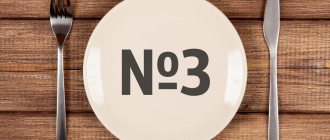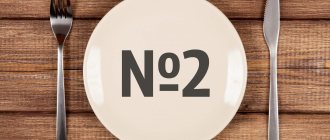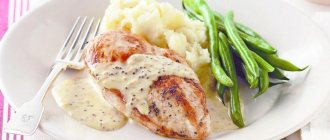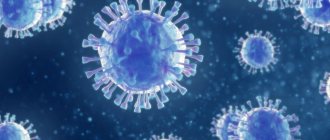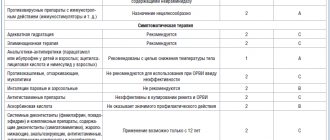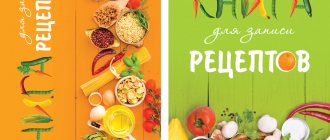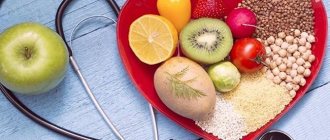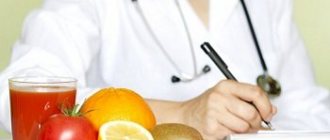Diet table 4 is prescribed for diseases of the gastrointestinal tract, accompanied by severe diarrhea and bloating. The main goal is to eliminate unpleasant symptoms. Let's figure out what foods you can eat and how to prepare them correctly.
Nutritional therapy is a prerequisite for the rapid recovery of patients with gastrointestinal diseases. At the beginning of the twentieth century, the famous scientist and founder of Soviet dietetics Manuil Pevzner developed a system consisting of 15 diets, each of which is suitable for certain ailments.
Who is recommended for treatment table No. 4?
Diet number 4 is prescribed for gastrointestinal problems characterized by acute pain, increased gas formation, diarrhea and other manifestations of discomfort. There are several varieties of 4 tables depending on the phase of the disease:
- 4a - chronic colitis and intestinal diseases, accompanied by diarrhea and increased flatulence. Consists mainly of proteins, the consumption of carbohydrates and fats is kept to a minimum;
- 4b - has a beneficial effect on the functioning of the liver and pancreas during exacerbations in the attenuation stage. Differs in greater variety compared to the previous version;
- 4c - is used during the recovery period and is one of the stages of the transition to a nutritious diet.
pixabay.com/
Consequences of not following the diet
With spontaneous refusal of therapeutic nutrition, especially at the acute stage of the disease,
:
- pain symptoms, spasms;
- nausea, vomiting;
- diarrhea, to dehydration;
- bile flow disorders, hepatic colic;
- intoxication of the body due to intestinal infections, hepatitis C.
Errors in diet cause relapse of chronic gastrointestinal pathology.
Diet Basics 4
Before moving on to talking about permitted and prohibited products, you need to understand a few basic rules:
1. Meals should be fractional. Food is taken 4-5 times a day in small portions.
2. The daily calorie intake is approximately 2000 kcal. In case of severe diarrhea and threat of exhaustion, these figures can be increased to 3000 kcal.
3. The consumption of vegetables and fruits rich in fiber is strictly limited, as they contribute to the development of inflammatory processes and cause fermentation in the intestines.
4. It is imperative to adhere to the drinking regime in order to prevent dehydration due to prolonged stool disorder (1.5 liters per day).
5. To avoid trauma to the gastric mucosa, it is necessary to follow three principles of sparing: thermal, mechanical and chemical. This means that the daily menu should consist of pureed or liquid dishes at a comfortable temperature with the complete exclusion of products that have a strong taste (spicy, sour, smoked, etc.). Preferred cooking methods are steaming, boiling and stewing.
6. Eliminate milk from the diet. Porridge is cooked only in water.
7. For soups, use vegetable or weak meat broths.
8. It is better to give preference to minced meat dishes.
9. Vegetables are served heat-treated in the form of purees or as part of soups.
Nutrition for dysbacteriosis. Important details.
11.10.2021
Dysbacteriosis is a change in the usual microflora of the human body. This disease manifests itself due to congenital abnormalities of the gastrointestinal tract, intestinal infections, radiation or surgery . But still, the main reason for the appearance of this disease is the use of various antibiotics.
Characteristic signs of dysbiosis are:
- increased gas formation,
- weakness,
- poor digestion of food,
- loose stools,
- increased fatigue.
- in severe cases: weight loss, intoxication and dehydration.
The main component of treatment is proper nutrition.
- It is necessary to avoid eating spicy, fatty and fried foods, fruits, pickled and pickled vegetables.
- It is also not recommended to eat foods high in sugar, which provoke fermentation in the intestines .
- You should not drink water while eating; it dilutes the gastric juice and disrupts the digestion of food.
- It is advisable to drink coffee and tea some time after eating.
- If possible, avoid alcohol, or choose strong drinks, such as whiskey or vodka. Champagne, beer and wine cause aggravation - rumbling, bloating .
- Avoid high-fiber vegetables such as beets, cabbage, green lettuce and spinach. Plant fiber causes irritation of the colon mucosa. In people who are sick with dysbiosis , consumption of these products causes diarrhea (severe diarrhea).
- Eat as much protein as possible; it is found in meat; it must be stewed or boiled.
- Today, the task of obtaining tasty and healthy food with a high content of natural vitamins is greatly simplified by a double boiler. Since products cooked in it do not come into direct contact with liquid, this helps them retain their beneficial properties.
- You only need to eat stale bread.
Nutritional treatment does not mean completely limiting the number of servings or observing time intervals for taking them. You can eat as much as you want, whenever you want. Just listen to your body, because it is your best advisor.
intestinal microflora, the diet must include foods or preparations containing bifidobacteria or lactobacilli , which will restore the microflora. These include potato, rice, pumpkin extracts, as well as carrot juice and whey.
In case of Pseudomonas aeruginosa disorder, you need to eat as much red sweet pepper and black currants as possible.
For staphylococcal - garlic, strawberries, blueberries, raspberries.
In case of proteus exacerbation, raspberries, cranberries, and garlic are suitable for nutrition.
For candidiasis , mint, fennel, lingonberries, and wild garlic will help. For putrefactive inflammation, you need to have cumin, lingonberries and currants on hand.
During an exacerbation, the main dishes should be: pureed porridge, for convenience you can use a blender, soups with water or weak broth, blueberry and cherry jelly, crackers, strong tea. Gradually you can add boiled fish, steamed cutlets, pureed cottage cheese, and meatballs.
Published in Nutrition and Diet Premium Clinic
How to treat intestinal dysbiosis with traditional methods?
Treatment of intestinal dysbiosis with folk remedies can be an alternative or complement to traditional medicine methods, and the effectiveness of this approach is assessed individually. It is recommended to discuss the advisability of using traditional recipes at an appointment with a gastroenterologist. The following recipes are popular:
- black pepper - 3-5 peas of black (not allspice) pepper should simply be swallowed without chewing and washed down with a small amount of water; this must be done before meals or on an empty stomach, repeat daily for several weeks;
- garlic - 1-3 cloves of garlic should be eaten on an empty stomach and in the evening 2 hours after eating, washed down with yogurt;
- garlic oil - crush a medium-sized head of garlic into a pulp, place in a glass jar and pour in 200 g of vegetable oil, close; leave for 10 hours in the refrigerator; Before use, dilute the oil with lemon juice in a 1:1 ratio, take 1 tbsp three times a day. half an hour before meals for several months;
- garlic kefir - chop 2 heads of garlic and 5 medium onions, pour in a liter of kefir, stir, close the lid and place in the refrigerator for 5 days; after the allotted period, take 1 tbsp three times a day. during the week;
- eucalyptus - 3 tbsp. dry eucalyptus, pour ½ liter of boiling water, close, leave until cool, strain; take ¼ cup three times a day for 14 days.
Dysbacteriosis. Diagnostics
To recognize problems with the gastrointestinal tract, you do not need to have specialized knowledge, but to correctly establish that dysbiosis lies behind all the unpleasant symptoms, you need to conduct a diagnosis. It may include stool culture for dysbacteriosis, coprogram, bacteriological examination of biological material from the jejunal flexure. The most commonly used diagnostic methods are:
Bacteriological research. It is long (8 days), but during this time in the laboratory the bacteria that upset the balance of the intestinal microflora will grow from the culture.
One of the diagnostics may be bacteriological examination
Method for examining microflora metabolites. During their life cycle, microbes secrete volatile fatty acids specific to each of them. They are analyzed in the laboratory.
Diagnosis of dysbiosis is possible only after establishing the entire clinical picture and conducting laboratory tests. Symptoms and severity of signs are determined by the individual characteristics of the body, the disease that provoked dysbiosis, the age and eating behavior of the patient.
What is diarrhea?
If you have diarrhea, you need to drink a lot
Diarrhea is a symptom of gastrointestinal disorders characterized by the formation of liquid stool.
Normally, the stool should be hard, but if there is excessive fluid retention in the large intestine, so-called diarrhea may occur.
Diarrhea in itself only indicates a pathological condition of the large intestine, but is not a disease.
Normally, up to 75% of the contents of stool consists of water. The remaining 25% consists of the following substances:
- Undigested carbohydrates.
- Insoluble dietary fiber.
- Protein decomposition products.
- Fats.
- Slime.
- Intestinal discharge.
A person can absorb a significant amount of water with food, but the function of the large intestine is to absorb excess fluid. The absorption process may be disrupted due to various pathological phenomena, most often associated with cell damage.
In some cases, the intestines simply cannot cope with absorption due to the large volume of fluid received.
What can you eat if you have diarrhea?
Proper diet planning will help normalize digestion and get rid of the symptoms of gastrointestinal disorders. Diarrhea requires the addition of special foods to the diet.
Particularly important is the content of fiber and other dietary fibers that help form hard stools. List of recommended products:
- Bananas. These fruits will help relieve diarrhea and other unpleasant symptoms of intestinal disorders. The fiber contained in banana pulp helps form stool. In addition, eating bananas increases the amount of time between trips to the toilet, which is especially important for diarrhea.
- Rice. This product is easy to digest and helps form hard stools. It is recommended to eat white rice, as the fiber in brown and wild rice can make diarrhea worse.
- Apples. The pectin contained in these fruits improves the absorption of water in the intestines. In addition, apples contain a lot of glucose, which is necessary to restore the body's energy after a severe disorder.
- Yogurt. If diarrhea is a complication of taking antibiotics, yogurt can help restore the balance of gut bacteria.
- Weak tea. The tannins in green and black tea will help relieve symptoms of diarrhea.
- Buckwheat, millet and semolina porridge. These products increase the time it takes for stool to form.
- Marshmallow without additives. Regular marshmallows contain a lot of pectin.
- You can also add baked fruits and vegetables to your diet.
